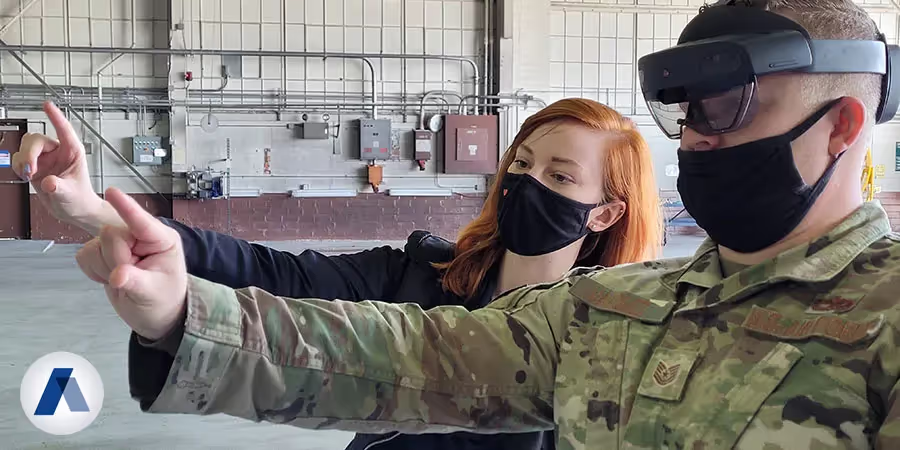ACE-XR AR Training Boosts Trainee Performance

Challenge
The U.S. Air Force faced a critical challenge: finite training resources and a limited capacity to quickly train and deploy personnel. The traditional methods of training new Airmen, particularly in maintenance and munitions for aircraft like the F-15 and F-16, were often time-consuming and constrained by the availability of physical equipment. There was a need for a more efficient training strategy that would not only improve learning retention and engagement but also enable the training to occur remotely and reduce overall costs.
Solution
To address these challenges, the U.S. Air Force, in partnership with Vectrona, Microsoft, and PTC, developed an advanced augmented reality (AR) solution known as the Augmented Cognitive Environment – Extended Reality (ACE-XR). This initiative integrated AR technologies to create immersive, 3D training environments. The solution leveraged:
- Vuforia Studio for creating and distributing AR content.
- Creo Illustrate for developing animated CAD models.
- ThingWorx for performance data analysis and content management.
- Microsoft HoloLens 2 for a highly interactive and immersive AR experience.
ACE-XR provided interactive 3D models of aircraft systems, offered visual instructions, and allowed for remote and offline training, enabling trainees to practice tasks and review concepts without the need for physical equipment.

Results
The implementation of the ACE-XR augmented reality (AR) training solution yielded substantial and measurable benefits for the U.S. Air Force. Trainees who used ACE-XR scored 8% higher on assessments compared to those in traditional training programs, demonstrating significant improvements in learning outcomes. The immersive AR environment facilitated more effective training by providing uninterrupted and repeatable practice opportunities, which reduced the reliance on physical equipment and eliminated downtime, allowing trainees to spend more time on task. Additionally, the engaging and gamified nature of ACE-XR boosted trainees' confidence and motivation. Trainees reported feeling more prepared for hands-on training due to the non-intimidating, interactive digital environment. The ability to conduct remote learning with ACE-XR was especially crucial during the COVID-19 pandemic, ensuring that training could continue uninterrupted. Furthermore, the AR solution proved effective for cross-training, helping Airmen rapidly acquire new skills in different areas. Overall, ACE-XR not only enhanced training efficiency but also supported high-quality, remote learning experiences and improved trainees' confidence and performance.
ACE-XR training improved trainee performance by 8% over legacy methods
Trainees felt more confident and engaged with interactive AR experiences
ACE-XR allowed effective remote training, crucial during the COVID-19 pandemic
High-quality AR visuals improved instruction and motivated trainees to learn
